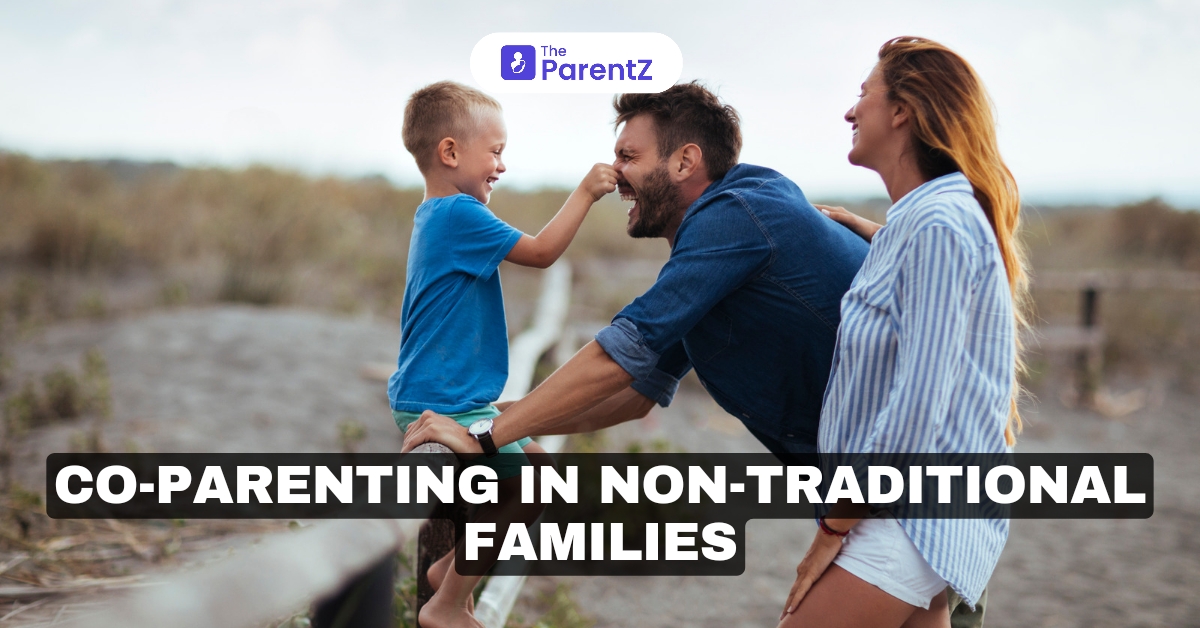The concept of family has evolved significantly in recent decades, moving beyond the traditional nuclear family model to encompass a wide variety of structures. Non-traditional families, including single-parent households, same-sex parents, blended families, and co-parenting arrangements between separated or divorced partners, are increasingly common. Co-parenting in these settings requires unique approaches to ensure children receive consistent support, love, and guidance. While non-traditional families face unique challenges, they also present opportunities for creative and effective parenting strategies.
Understanding Non-Traditional Family Structures
- Single-Parent Families: In single-parent households, one parent bears the primary responsibility for raising the child. While this setup can lead to time and financial constraints, successful co-parenting can still occur if the non-custodial parent remains involved and supportive. Flexibility, open communication, and shared responsibilities are key to ensuring the child has a strong relationship with both parents, regardless of household structure.
- Same-Sex Parent Families: Same-sex couples raising children face unique societal and legal challenges, but studies have shown that children in these families thrive just as well as those in traditional families. Co-parenting in same-sex families often involves an equitable division of parental duties, with both parents sharing the emotional and logistical aspects of child-rearing.
- Blended Families: In blended families, co-parenting involves managing relationships between biological parents, step-parents, and step-siblings. Clear boundaries, respectful communication, and collaborative decision-making are essential in this dynamic. Blended families may face loyalty conflicts or competition between siblings, but with patience and open dialogue, they can create a cohesive and loving environment.
- Co-Parenting After Divorce: Co-parenting following a divorce or separation can be complex, especially when there are unresolved emotional tensions between the parents. However, maintaining a child-centered approach—where decisions are made based on the child’s best interests—can help ensure a healthy co-parenting relationship. This approach minimizes conflict and ensures consistency for the child.
Challenges of Co-Parenting in Non-Traditional Families
- Communication Issues: One of the most common challenges in non-traditional co-parenting is maintaining effective communication between parents, especially in cases of divorce or separation. Parents may have different parenting styles, values, or expectations, leading to conflict. Establishing clear communication channels—whether through regular check-ins, a shared calendar, or co-parenting apps—can help ensure that both parents are on the same page.
- Financial Stress: Financial issues often arise in non-traditional family structures, especially in single-parent households or families where one parent is the primary breadwinner. Transparent conversations about child support, shared expenses, and budgeting can help reduce tension. In blended families, managing finances between step-parents and biological parents can also be a point of contention, requiring careful negotiation.
- Emotional Strain on Children: Children in non-traditional families may experience emotional strain due to changes in family structure, such as divorce, remarriage, or separation. It's crucial for parents to prioritize the child’s emotional well-being by providing reassurance, love, and stability. Open communication about family dynamics and an emphasis on maintaining strong relationships with both parents can ease the child’s adjustment.
Strategies for Effective Co-Parenting
- Prioritizing the Child’s Needs: The foundation of effective co-parenting is putting the child’s needs above personal differences or conflicts between parents. This involves making decisions that are in the child’s best interest, ensuring they feel loved, secure, and supported by both parents. Even in situations where parents no longer live together, creating a consistent and stable environment is key.
- Maintaining Consistency: Consistency in routines, rules, and expectations is essential for children to feel secure. Co-parents should strive to align their parenting styles as much as possible, agreeing on bedtimes, discipline methods, and educational goals. When children experience a seamless transition between homes, they are less likely to feel anxious or confused.
- Respecting Boundaries: In non-traditional families, particularly in blended families or after divorce, it’s important for co-parents to establish and respect boundaries. This includes boundaries regarding parenting roles, decision-making, and involvement in each other’s personal lives. Respecting these boundaries reduces conflict and helps maintain a cooperative co-parenting relationship.
- Flexibility and Compromise: Successful co-parenting requires flexibility and a willingness to compromise. Schedules may need to change, holidays may need to be negotiated, and unexpected situations will arise. Approaching co-parenting with an open mind and a willingness to adapt will help create a positive environment for both the child and the parents.
- Seeking Professional Support: In situations where co-parenting becomes difficult due to unresolved conflicts or communication breakdowns, seeking professional help from a mediator, therapist, or counselor can be beneficial. Professional guidance can help parents develop effective communication strategies and resolve conflicts in a way that prioritizes the child’s well-being.
Benefits of Co-Parenting in Non-Traditional Families
- Resilience in Children: Children raised in non-traditional family structures often develop resilience, as they learn to adapt to different environments and relationships. Co-parenting teaches children important life skills, such as problem-solving, empathy, and adaptability.
- Broader Support Network: Non-traditional families often have extended support systems, such as step-parents, grandparents, and close family friends, who play an active role in the child’s life. This can provide children with a broader network of emotional and practical support.
- Balanced Parenting Styles: In co-parenting arrangements, children may benefit from experiencing different parenting styles. While consistency is important, children who are exposed to different approaches to problem-solving, communication, and emotional regulation can develop a more well-rounded perspective.
Conclusion
Co-parenting in non-traditional families presents unique challenges, but it also offers opportunities for growth, resilience, and creative parenting solutions. By prioritizing the child’s needs, maintaining open communication, and establishing clear boundaries, parents can create a nurturing environment that supports the child’s development. Non-traditional families, despite their complexities, can be just as loving, supportive, and successful as any other family structure








Be the first one to comment on this story.